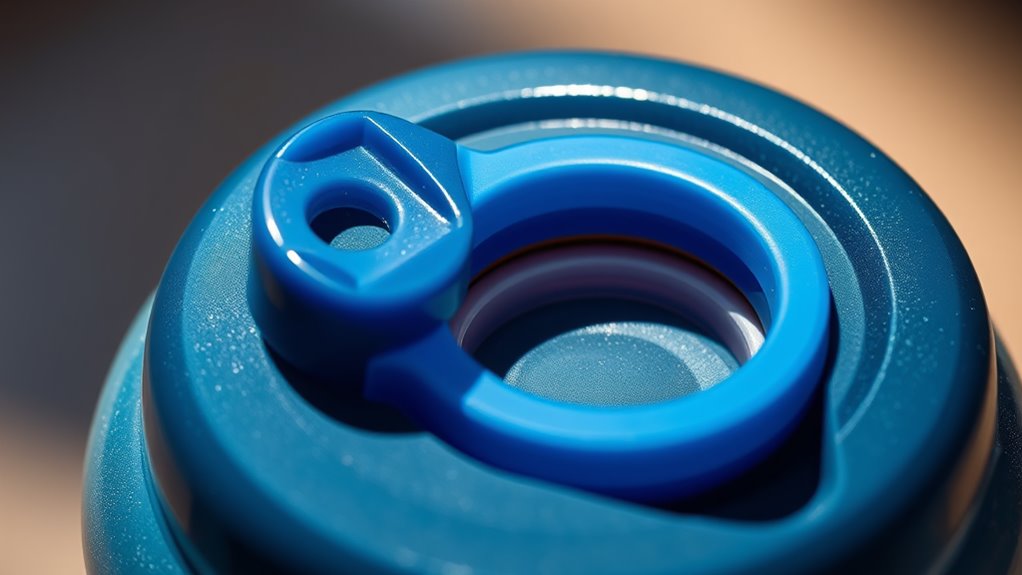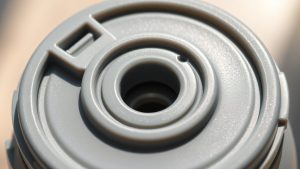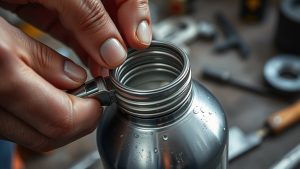
When examining a water bottle lid, you'll find essential elements like threads that guarantee a tight seal, preventing leaks. Closure mechanisms, such as twist-off or screw-on designs, enhance usability and security. Ergonomic features improve grip for easy handling. Additionally, materials are carefully selected for durability and environmental impact, impacting your overall experience. Understanding these components can elevate your knowledge of bottle design, leading to a deeper insight into functionality and innovation.
When you think about a water bottle, the lid might seem like a simple component, but its anatomy is intricately designed to guarantee functionality and reliability. The threads on the bottle neck and the corresponding spiral threads on the lid create an essential seal. This threading system allows you to effortlessly twist the lid on and off, making certain that the contents remain secure. The sealing surface, a flat area on the lid that contacts the bottle, plays a significant role in preventing leaks. If this surface isn't designed correctly, you're likely to face frustrating spills.
The intricately designed lid of a water bottle ensures a secure seal, preventing frustrating leaks and spills.
Another important consideration is the mouth diameter, which affects how easily you can drink from or fill the bottle. A wider mouth allows for quick access and easier cleaning but may require a larger lid, while a narrower mouth needs a more specialized closure. The neck finish, labeled with specifications like 28-400, defines the lid's compatibility with the bottle's design. This standardization makes sure that you find the right lid without worrying about over or under-tightening, both of which can lead to leaks or difficulties in opening. The neck finish's specifications are crucial for the lid's compatibility with the bottle's design.
Lid closure mechanisms add another layer of complexity. Twist-off lids are incredibly common for water and soda bottles, providing convenience without sacrificing security. In some designs, metal seals compress against the bottle's mouth for a reliable seal, while snap-on closures, although less common, can offer visual appeal or added security. Screw-on closures dominate the landscape of water bottles, using threads to create a strong seal, but some innovative designs incorporate lid locking systems to prevent accidental openings.
When you look at the design considerations for lids, material choice becomes a significant factor. Manufacturers select plastics, metals, or ceramics based on durability, weight, and environmental impact. As consumer demands shift towards sustainability, many companies are investing in sealing technology that reduces leaks and improves overall satisfaction.
Ergonomic design is essential too—lids should be comfortable to grip and easy to twist on and off. Features like tamper-evident indicators enhance safety, showing if a lid has been previously opened.
Lid functionality has also seen innovation. Quick-open systems allow you to access your drink rapidly without compromising the seal, while integrated spouts or nozzles enhance convenience. Some lids even come with built-in filters for water purification or flavor enhancement. Recessed areas on lids can accommodate handle attachments or labeling for branding purposes, while child safety features are critical for preventing accidents.
In manufacturing, custom molds create precision in thread configurations and sizes. Quality control measures make certain each lid meets rigorous standards for sealing and durability. Automated machinery in production lines increases efficiency, while supply chain logistics manage the raw materials needed.
Regular testing procedures are significant for making sure that each lid design meets safety and performance expectations. The end result is a product that's not just a cap for your bottle, but a thoughtfully engineered component that enhances your hydration experience.
Conclusion
In the intricate design of a water bottle lid, the interplay between simplicity and functionality reveals a deeper truth. While the cap may seem like a mere accessory, its components—seals, threads, and spouts—serve as guardians of hydration, balancing convenience with security. Just as a seemingly small detail can influence the larger experience, so too can the choices you make in life. Embrace the elegance of these details, for they hold the power to shape your journey.



